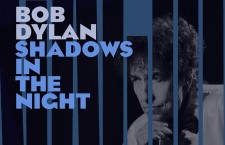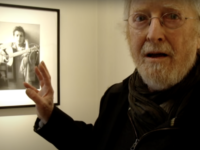A song originally governed by long-time collaborator Don Costa’s tidal orchestration, “Stay With Me” was a moment of trembling devastation in the hands of Frank Sinatra. Nothing about it, in my many, many, many years of listening, has ever said Bob or Dylan.
Not that I wasn’t a fan. I just couldn’t picture the twain ever meeting, as they promise to do on the Bob Dylan’s forthcoming Sinatra-only covers project Shadows in the Night. Then I heard this new version of “Stay With Me,” which premiered via NPR today.
Dylan deftly sidesteps my own initial misgivings, finding a craggly sense of fortitude within the song’s familiar paces. Playing with a reconstituted, small-band arrangement, he sounds lonesome but not nearly as alone as was Sinatra back in the early 1960s. I found myself hearing new things from a pair of very old friends.
It’s something in the way Dylan approaches the lyric, on this second single from Shadows in the Night, as he sways from a sturdy expositional approach toward his now-familiar, late-period bark — an entirely different brand of broken grandeur. The stirring strings on the more familiar earlier take are replaced here by the spaciousness of a steel guitar, allow Bob Dylan’s echoing voice to sit center stage in a way that even Frank Sinatra couldn’t entirely inhabit, awash as he was before with that swooning band.
You’re left with an important, if unlikely, lesson in approaching music previously thought to be definitively interpreted — as was “Stay With Me,” it seemed, on the the odds-and-ends collection Sinatra ’65. Bob Dylan, maybe the very last person you’d expect to dive into the Frank Sinatra songbook, is quite clearly a fan. At the same time, however, he doesn’t allow himself to become entangled in fealty to what came before.
Sure, the lyrics (as composed by Carolyn Leigh, and later used as the dramatic motion-picture theme for The Cardinal), remain unchanged. The technical approach, recording live in a Capitol studio with musicians right there with you, is the same, too. From there, however, Dylan runs hard and fast away from expectations and, in so doing, discovers new corners of a song that’s been around for generations.
If Dylan’s take “Stay With Me,” so different in both manner and tone, is any indication, Shadows in the Night could end up surprising more than a few naysayers when it arrives on February 3, 2015, via Columbia. It’s certainly changed my mind.
- How Deep Cuts on ‘Music From Big Pink’ Underscore the Band’s Triumph - July 31, 2023
- How ‘Islands’ Signaled the Sad End of the Band’s Five-Man Edition - March 15, 2022
- The Band’s ‘Christmas Must Be Tonight’ Remains an Unjustly Overlooked Holiday Classic - December 25, 2016




